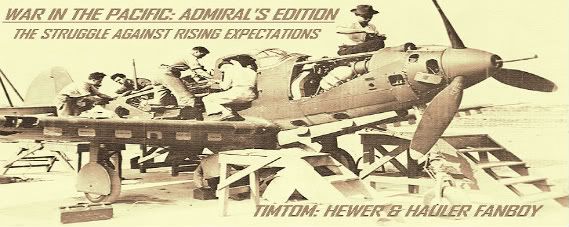Howard Mitchell
Posts: 449
Joined: 6/3/2002
From: Blighty
Status: offline

|
Eyes for the Phoenix by Geoffrey J. Thomas, ISBN 0-9519899-4-4 is a volume devoted to Allied aerial Photo-reconnaissance operations over South East Asia, 1941-45. Published by Hikoki in the UK, it was been remainded for a while and you should be able to get a cheap copy. It is a while since I read it, and unfortunately it lacks an index, but I browsed through it this morning.
No 3 PRU has two separate existences. To confuse matters, No 5 PRU unit was re-named No 3 PRU (India) around May 42, presumably with the original No 3 having been disbanded at that time.
The First Unit: No 3 PRU
No 3 PRU is mentioned as being under the direct command of AOC Burma and lead by AVM D. F. Stevenson OBE DSO NC between Jan 42 and Apr 42.
Stevenson assumed command at Mingaladon on 1 Jan 42 and the unit used a modified Buffalo from 67 Squadron, equipped with a F24 14 inch vertical camera behind the cockpit. It retained two fuselage guns. The first recce mission was carried out on 18 Jan 42 from Mergui.
Two Hurricane Mk IIAs from No 2 PRU joined No 3 PRU on 25 Jan 42 and on 21 Feb the PRU unit withdrew to Magew.
On 21 March 42 one of the Hurricanes was shot down accidentally by a 17 Squadron pilot, Plt Off H. Everard, and belly-landed. “Not a bad day’s work Everard; one of theirs and one of ours!’ was his squadron leader’s comment. This Hurricane had been the only servicable No 3 PRU aircraft.
Towards the end of March 42 Magwe was evacuated and No 3 PRU moved to Mandalay and then Lashio.
The Second Unit: No 3 PRU (India)
The re-named No 5 PRU was commanded by Sqn Ldr A. C. Pearson from Apr 42 to May 42, and by Wg Cdr S. G. Wise DFC from May 42 to Jan 43.
It seems that having moved to India the unit flew five B-25Cs. The aircraft gun turrets were removed and the upper turret opening faired over, and they were finished overall in a dull dark blue similar to the ‘Royal Blue’ used on PR Hurricanes. National markings were carried on the upper surfaces only. As the blue of the roundels was more or less invisible this led to concerns that, with just the red centre obvious, they could easily be mistaken for Japanese aircraft. 2,000 gal fuel tanks were installed in the bomb bays, extending their operating radius to about 1,000 miles. Three F8 or F24 cameras were carried in place of the ventral turret and an F52/20 inch was mounted in the rear fuselage. As a test they flew one to Mount Everest, flying around it at about 30,000 feet. Their speed and altitude were considered enough in the early war years to keep them safe from interception.
The three volumes of the Bloody Shambles series mention 3 PRU in passing:
On 16 March 42 it was part of BURWING and had one Hurricane and one Tigermoth on strength.
On 22 March 42 only the Tigermoth remained (due to Plt Off Everard!); it carried out a recce over Toungoo looking for isolated British units. The Tigermoth was flown to Laisho.
On 13 April 42 No 3 PRU took over two Hurricanes from 17 Squadron at Laisho.
3 PRU is shown as having Hurricanes and Mitchells at Calcutta in the RAF Order of Battle for September 42.
By Jan 43 it was based at Agartala and Dum Dum with 681 Squadron and had together they had B-25Cs, Hurricanes and Spitfire IVs.
_____________________________
While the battles the British fight may differ in the widest possible ways, they invariably have two common characteristics – they are always fought uphill and always at the junction of two or more map sheets.
General Sir William Slim
|
 Printable Version
Printable Version













 New Messages
New Messages No New Messages
No New Messages Hot Topic w/ New Messages
Hot Topic w/ New Messages Hot Topic w/o New Messages
Hot Topic w/o New Messages Locked w/ New Messages
Locked w/ New Messages Locked w/o New Messages
Locked w/o New Messages Post New Thread
Post New Thread